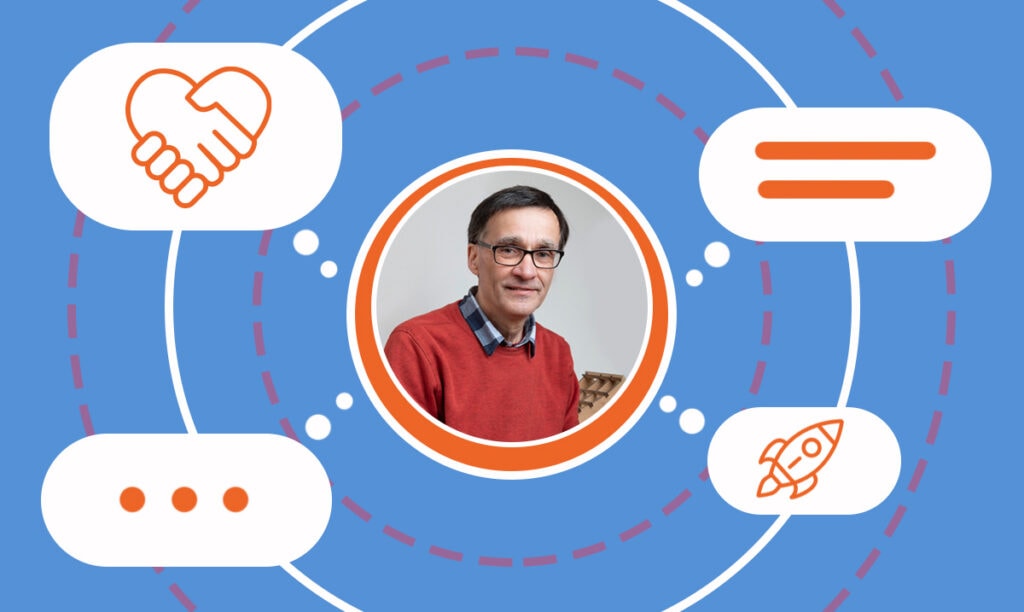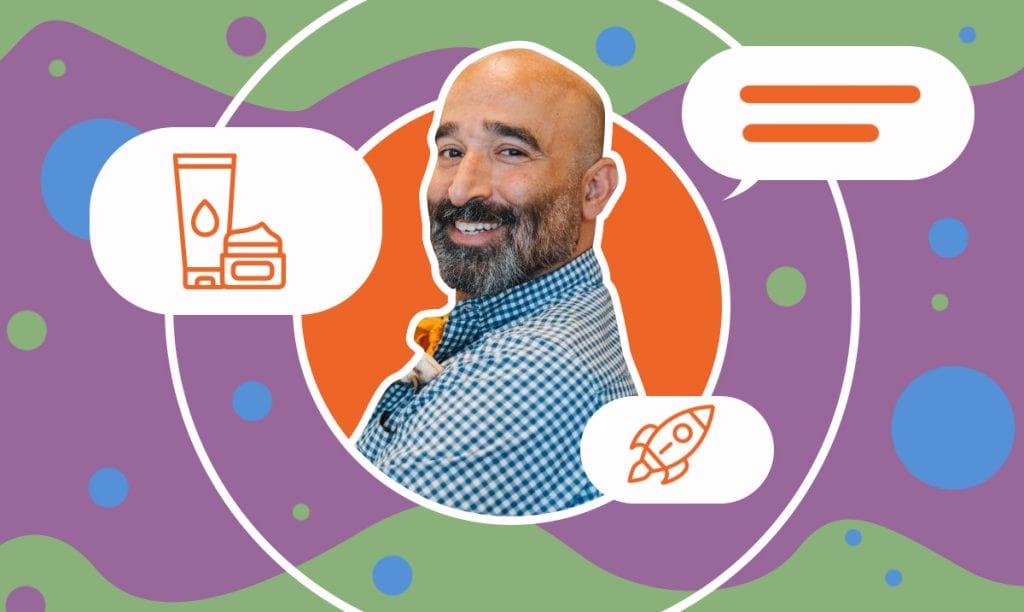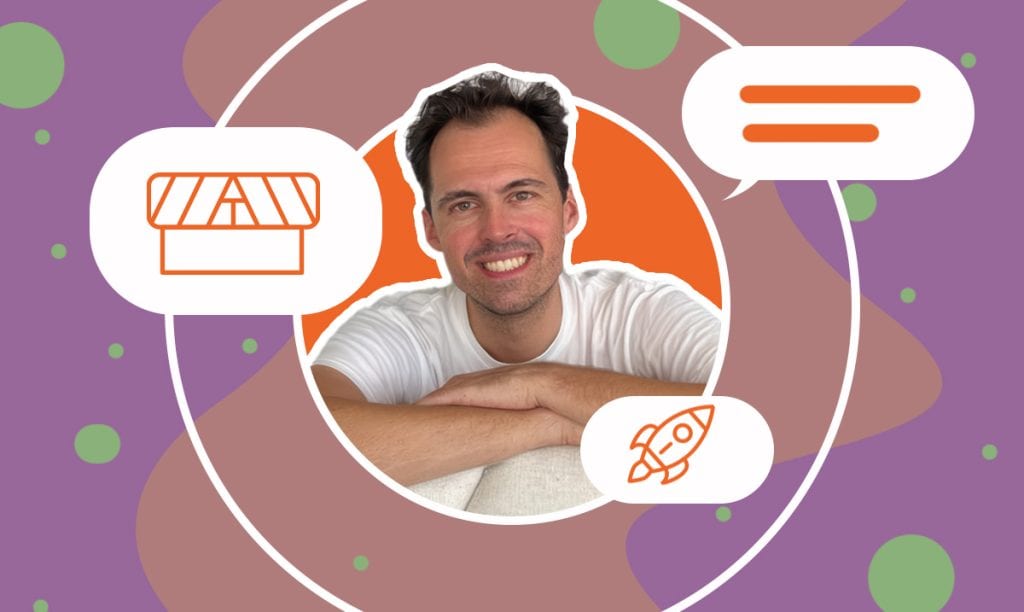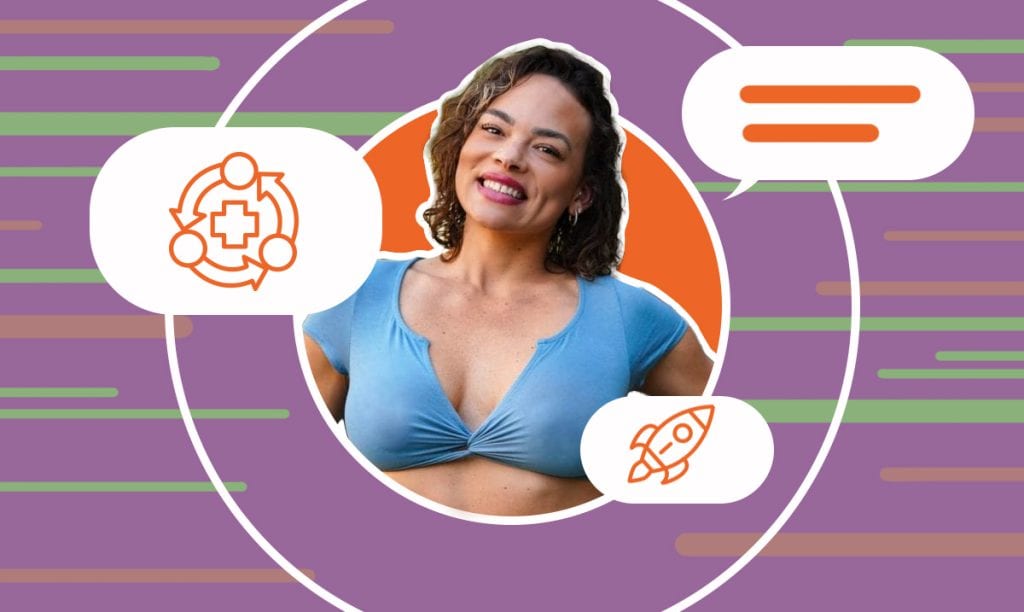Jonathan Plotzker-Kelly, founder of Heliotrope San Francisco, has spent over a decade crafting high-quality, all-natural skincare products rooted in ...
How a Simple Idea Became a Lifesaver for Singles
Written by: Esther Strauss
Esther is a business strategist with over 20 years of experience as an entrepreneur, executive, educator, and management advisor.
Published on April 11, 2024

In this interview, we’re speaking with Rob van den Akker, the mind behind TheLifeSigns, a unique service designed to support singles living alone. After a distinguished 30-year career in the pharmaceutical industry, Rob embarked on a new journey to address a pressing social issue: the safety and well-being of individuals living alone. Through TheLifeSigns, he offers a simple yet potentially life-saving solution.
Join us as we delve into Rob’s inspiration, the challenges he faced in creating this service, and his vision for its future. This conversation promises to shed light on how one person’s idea can evolve into a vital community resource, offering insights and inspiration for anyone looking to make a meaningful impact.
Career Shift to Innovation: Rob’s Journey
SBS – What inspired you to transition from the pharmaceutical industry to creating TheLifeSigns service?
Rob – After working for many years at Abbott Healthcare Products (I am a pharmacist), I decided to do something vastly different. I was looking for a project that could solve an existing challenge in society. Reading a newspaper article about the growing number of singles being found in their homes days or weeks after something happened to them inspired me to look for a solution to this issue.
The resulting product, TheLifeSigns, is a simple email-based service that automatically notifies friends when a solo living individual becomes incapacitated. The service was introduced in the Netherlands a couple of years ago, with very positive feedback. We are now expanding to the rest of the world.
The Spark Behind TheLifeSigns
SBS – Can you describe the moment or experience that sparked the idea for TheLifeSigns?
Rob – I heard many stories about single living persons who died because something happened to them, and they could not call for help. A local newspaper reported that every year in Amsterdam, 34 fatalities on average are detected after 14 days. It is likely that if aid had arrived sooner, several of these fatalities may have been avoided. Dying alone turns out to be a global and growing phenomenon. In Japan, they even have a special word for it: Kodokushi (孤独死), or lonely death.
I decided to work on a solution for this issue. I have the luxury of doing all the coding myself, and the costs for a server on Amazon Web Services (AWS) are low. This makes my financial runway quite long, and I can offer the service for free. In parallel I work on developing paid services. The first introduction in the Netherlands validated the idea that there is a need for a service like this.
Pharmaceutical Expertise Influencing LifeSigns
SBS – How does your background in pharmacy influence the way you approach this service?
Rob – I studied pharmacy because I liked science and helping people. For most of my working life, I worked in the pharmaceutical industry, developing new drugs. From a scientific point of view, this was very interesting. However, the development projects took many years, and most of them failed in clinical studies. The pleasant thing about working on an IT startup is that you can develop a product relatively fast and do not have to bother with too many regulations.
Explaining TheLifeSigns: Functionality and Features
SBS – Could you explain how TheLifeSigns service works in simple terms and its key features?
Rob – TheLifeSigns is a simple and free service that can be used without the installation of any app or program. Simply create an account and provide your email address together with those of some friends, family, or colleagues as buddies.
From now on, you will receive a daily email with a TheLifeSigns button. As long as you press the button every day, none of your buddies will be contacted. In case you are not able to press the button, TheLifeSigns automatically sends requests to your buddies to check in on you.

Overcoming Challenges in Email-Based Service
SBS – What challenges did you face in developing a service that relies on daily emails, and how did you overcome them?
Rob – From a customer perspective, emails work fine. Even elderly people nowadays have access to email via computer, tablet, or telephone. However, there are some users requesting other communication channels like WhatsApp. I plan to add this feature later.
From a technical perspective, there were issues with delivery in the beginning. It took some time to correctly implement SPF, DKIM, and DMARC authentication protocols. I send my emails using AWS Simple Email Service and closely monitor bounce and complaint rates in order not to have my email account blocked.
User Privacy and Security in TheLifeSigns
SBS – How do you ensure the privacy and security of users, especially considering the sensitive nature of the service?
Rob – We only collect limited data from users and buddies. During the sign-up, only email addresses are collected, and there is a short instruction text for what to do when the alarm goes off. We do not ask for names, addresses, or other personal data.
For the rest, TheLifeSigns uses industry-standard security measures. The communication between the browser and our server is encrypted using the HTTPS protocol. Passwords are stored encrypted. The software is regularly updated.
Funding Model and Future of TheLifeSigns
SBS – The service is currently free and privately funded. Do you have plans for it to become commercially viable in the future, or will it remain a community service?
Rob – TheLifeSigns service is privately funded and currently not aimed at making a profit. The service is currently free. If, however, the service grows, we may have to ask for a contribution to cover the server and maintenance costs. The aim is to keep email alerts free and ask for a fee for features like WhatsApp alerts. As the community grows, we may also add advertisements directed specifically to people living alone.
Rewards and Impacts of Developing TheLifeSigns
SBS – What has been the most rewarding aspect of creating and running TheLifeSigns service?
Rob – It’s extremely rewarding to see how customers appreciate the service. Some time ago, I had an outage for a couple of hours, and I was flooded by emails from worried customers asking why they didn’t receive their daily emails.
User Feedback: Stories and Impact
SBS – Have you received any feedback from users that has particularly impacted you or the service?
Rob – Here are some (unsolicited) responses from users:
- “I am very happy with the daily messages and beautiful texts. Many thanks!”
- “I think it’s a great tool you’ve developed. It gives myself, but also my loved ones, who live quite a distance, a basis of security. The principle is so well designed in its simplicity that anyone who can email can understand how it works.”
- “Compliments for how neat everything looks. Those beautiful images with text are also nice. It gives a nice feeling to have this arranged. I hope there will be enough interest to continue the service because as you know I am very happy with it. Thank you very much for allowing me to use this system free of charge.”
- “I have recently started making grateful use of your service. I was very happy to be alerted to it as I had been looking for something like this for a long time. I have now forwarded the information about TheLifeSigns to several people.”
- “My son also likes this idea. Not just because I’m older, but because if you live alone and don’t have to be somewhere every day (and people don’t miss you), there is some kind of control. Without that, neither my son nor I have to do much. It is not invasive.”
- “Thank you for your great system. My mother feels a lot safer.”
- “As a single 68-year-old, I wholeheartedly applaud your program and recommend it to all my peers. Thanks! Very nice that this exists!”
- “Good system! Thank you very much for inventing and implementing it!”
Future Developments in TheLifeSigns
SBS – Are there any plans to expand or evolve TheLifeSigns service, perhaps including new technologies or features?
Rob – As mentioned above, I am considering adding other communication channels like WhatsApp or Telegram. I am not sure if I want to develop an Android or iPhone app because one of the benefits of the current system is that you do not need to install an app, and it nevertheless works on every device that has internet access. I’m also thinking about adding a movement sensor to the system if a user is detected that no email is sent for that day.
The current focus, however, is on increasing the number of users.
Balancing Simplicity with Reliability
SBS – How do you balance the need for simplicity and ease of use in the service with the need for reliability and prompt response?
Rob – The service works on a 24-hour cycle with one interaction a day. This means that you do not get instant responses, e.g., fall detection or alarm button services. But the upside of the TheLifeSigns service is that you do not need dedicated devices and that the service is quite easy to set up and free to use.
Advice for Social Innovation Aspirants
SBS – Finally, what advice would you give others who are inspired to create solutions for social challenges based on your experience with TheLifeSigns?
Rob – I really enjoy my current journey of building a product and making it grow because I like technology and feel good about helping people live a safer life. My advice would be to try to find a product you think has added value to society. If you love your product and enjoy the technologies, the rest will follow. In my experience, building the product was not the hardest thing to do. Reaching potential users is far more difficult. Perhaps in this stage, I should try to get some venture capital to grow the service, but I’m hesitating to do that because investors would put a lot of pressure on the project. But if you need the money, this would be the way to go.
Comments
Leave a Reply
Subscribe to Our Newsletter
and gain insider access to cutting-edge business insights and trends.
Featured Resources

How a Retail Pro Turned Skin Sensitivity Into a Skincare Brand
Published on April 3, 2025
Read Now

How AirTulip Improves Sleep Quality and Eases Allergies with Clean Air
Published on February 27, 2025
Imagine waking up feeling truly refreshed, breathing air that is 1,000 times cleaner than what traditional purifiers can offer. That’s the promise ...
Read Now

How Lin Mezori Is Transforming the Recovery Industry
Published on January 2, 2025
Lin Mezori, the matriarch behind Pure Recovery, has transformed the wellness and recovery space with her vision of blending innovative therapies and ...
Read Now
Mooi initiatief, Rob. Simpel en smart.
Wat mooi Rob dat je dit in de afgelopen jaren ontwikkeld hebt! Een zinvolle bijdrage aan de wereld….